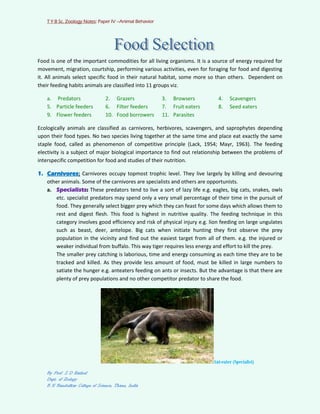The document discusses animal feeding behavior, categorizing animals into groups based on their dietary habits such as carnivores, herbivores, and omnivores. It highlights the importance of food selection, competitive principles, learned aversions, and energy budgeting in foraging strategies among different species. Additionally, it emphasizes that animals adapt their feeding behaviors according to the nutritional value of available food and environmental factors.



